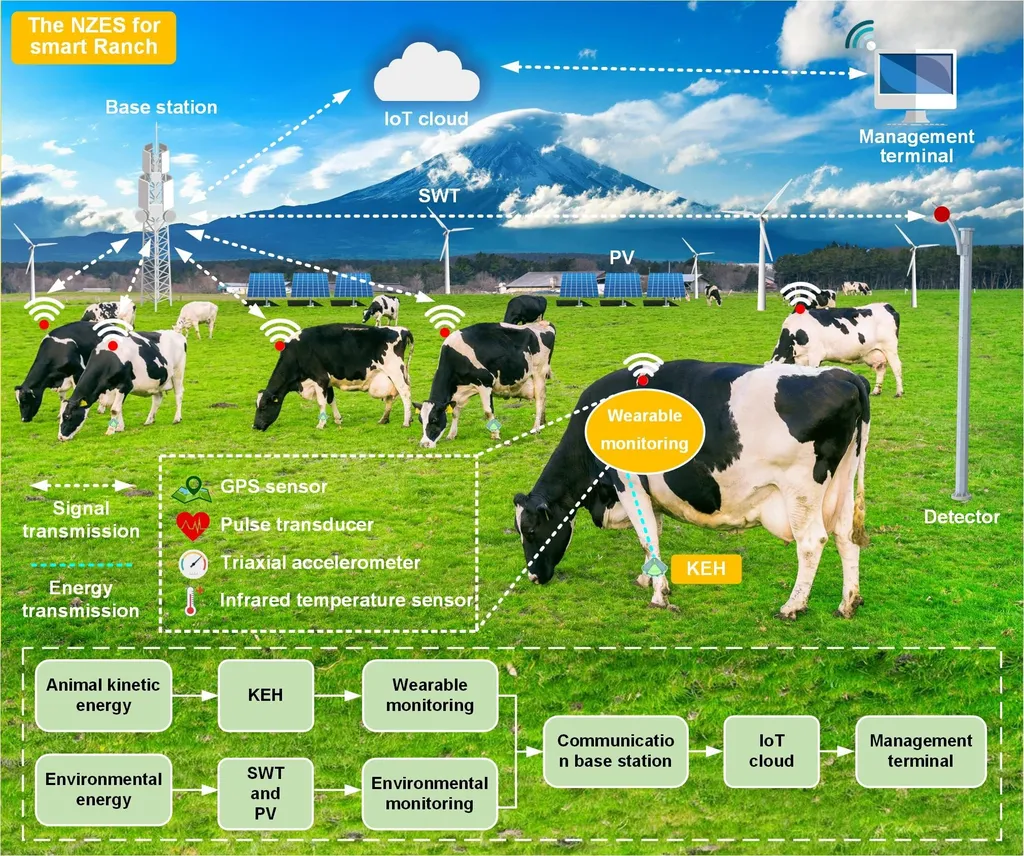In the ever-evolving landscape of smart agriculture, researchers are continually seeking innovative ways to power the myriad sensors that monitor everything from soil conditions to animal health. A recent study published in the *International Journal of Sustainable Energy* offers a promising solution: wearable energy harvesting from livestock. Led by Zahra Jafari from the Department of Mechanical Engineering of Biosystems at Urmia University in Iran, the research explores how different energy-harvesting methods can be integrated into a simple bell worn by livestock to generate sustainable power for agricultural sensors.
The study investigated four primary methods of energy harvesting: piezoelectric, thermoelectric, electromagnetic, and photovoltaic. Each method taps into a different source of energy—animal movement, body heat, magnetic field variation, and sunlight exposure, respectively. The goal was to create a self-sustaining system that minimizes the need for battery replacements and reduces reliance on fossil fuels, a critical challenge for modern farms adopting Internet of Things (IoT) technologies.
“By integrating multiple energy-harvesting methods into a single wearable device, we can create a more resilient and autonomous system for powering agricultural sensors,” Jafari explained. “This approach not only reduces maintenance costs but also supports long-term monitoring, which is essential for sustainable farming practices.”
The research team designed a circuit to generate and store energy from these various methods. Over three days, they measured the voltage and power output at different times of the day. The results were compelling: photovoltaic energy generated the highest output, with a peak of 1052.01 millivolts (mV) and 283.77 microwatts (μW). In contrast, piezoelectric energy produced the lowest output at 14.12 mV and 0.11 μW. However, when all four methods were combined and processed through a DC/DC converter, the system achieved a maximum output of 3103 mV and 2049 μW.
These findings highlight the potential of multi-source energy harvesting for sustainable sensor operation in agriculture. By leveraging the natural movements and heat of livestock, as well as ambient sunlight and magnetic fields, farmers can maintain a consistent energy supply for their IoT devices. This innovation could significantly reduce the operational costs associated with battery replacements and fossil fuel dependence, making smart agriculture more accessible and environmentally friendly.
The commercial impact of this research is substantial. As farms increasingly adopt IoT technologies for real-time tracking and monitoring, the demand for reliable and sustainable energy sources will grow. Wearable energy-harvesting devices could become a standard feature in smart livestock farming, enabling farmers to collect data more efficiently and make informed decisions about animal health and environmental conditions.
Looking ahead, this research could pave the way for further advancements in energy harvesting technologies. Future studies might explore additional energy sources or optimize the current methods to enhance efficiency and output. As the agriculture sector continues to embrace digital transformation, innovations like these will play a crucial role in shaping a more sustainable and productive future for farming.
In the words of Jafari, “The integration of multiple energy-harvesting methods into wearable devices represents a significant step forward in sustainable agriculture. It’s an exciting time for the field, and we’re eager to see how these technologies evolve and impact farming practices worldwide.”

